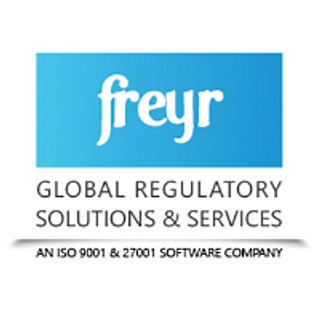CLP Regulation Compliance Guide for Chemical Manufacturers
- Freyr Global Regulatory Solutions
- Jul 11
- 2 min read
For businesses distributing chemical products within the EU, adherence to the Classification Labelling Packaging (CLP) Regulation is crucial. This regulation facilitates clear hazard communication, safeguarding workers, consumers, and the environment. Below is a guide for companies to remain compliant and steer clear of penalties. 1. CLP Hazard Classification The initial phase involves pinpointing and categorizing hazards for chemical substances and mixtures. This evaluation must align with CLP criteria and involve verification against harmonized classifications established in Annex VI of the CLP, which are enforceable by law. Proper classification is vital for accurate CLP labeling and packaging. 2. CLP Labeling Requirements Every hazardous chemical product is required to have a compliant label featuring: - Hazard pictograms (red diamond-shaped symbols) - Signal words such as “Danger” or “Warning” - Hazard (H) statements that outline the nature and severity of hazards - Precautionary (P) statements that specify safety measures - Product identifier (name of the chemical or mixture) - Supplier contact information Labels must be robust, easy to read, and in the official language(s) of the EU nation where the product is sold. Furthermore, labels should be revised whenever new hazard information emerges. 3. Safety Data Sheets (SDS) and Packaging To comply with EU regulations regarding Safety Data Sheets, the SDS must meet the requirements of REACH Annex II, providing comprehensive information about hazards, safe handling, and disposal practices. Suppliers must ensure that SDSs are continuously updated as classifications or safety protocols evolve. Packaging is vital for chemical safety. It must prevent leaks and maintain the stability of the chemicals. For some hazardous products, child-resistant closures and tactile warnings are mandatory. CLP Regulation Labels must be securely attached and resistant to wear and tear. 4. ECHA CLP Notification and Reporting Manufacturers and importers must report hazardous substances to ECHA's classification and labeling inventory. For hazardous mixtures, a Poison Centre Notification (PCN) is also necessary to facilitate emergency health responses throughout the EU. 5. Continuous Monitoring Maintaining CLP compliance is an ongoing responsibility. Companies should remain abreast of regulatory updates, including modifications through Adaptations to Technical Progress (ATPs). Regular reviews of hazard classifications, labels, and SDSs are essential for sustained compliance. Navigating CLP classification requirements can be challenging. Freyr’s regulatory specialists are available to assist in ensuring your chemical products fulfill all classification, labeling, packaging, and reporting requirements. Reach out to us today for reliable compliance |







Comments